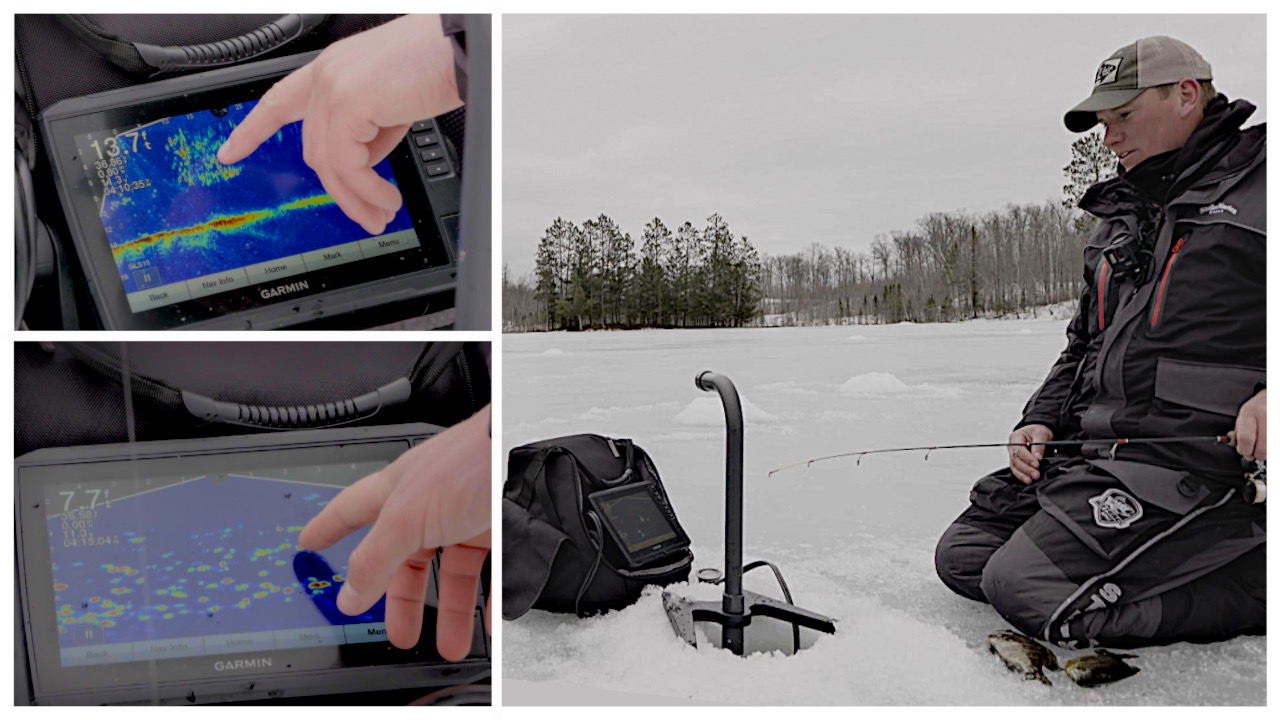If you’ve invested in real-time forward-looking sonar, you’ve likely questioned when to use forward view versus a down view scanning orientation. Wired2fish’s Kyle Peterson explains when and why he uses forward and down views when ice fishing, but the same approach holds in open water.
Peterson equates forward view as his “search and destroy” mode. You can’t catch if you’re not on them, and forward mode is aimed squarely at scanning out and away from you to locate fish — if your range is set to 75-feet, then your effective search diameter is 150-foot, all from a single hole (if ice fishing).
Peterson uses forward view to mark and drill on fish after locating a targetable fish population. Assuming the fish don’t move, he then switches to down view to focus on catching by expanding the underwater world below and off to the immediate sides of his position.
Down view is the best orientation for “video gaming” fish, that is, interpreting fish mood and their response to your presentation. You can quickly determine if fish are (or aren’t) receptive to your presentation and make changes accordingly.
TACKLE AND EQUIPMENT
- FISHFINDER – Garmin LiveScope Ice Fishing Bundle
- AUGER – StrikeMaster Lithium 40v Ice Auger
- DRILL – StrikeMaster LiteFlite Lazer Drill, 8-inch
- BIBS – StrikeMaster Battle Bibs
- JACKET – StrikeMaster Battle Jacket












